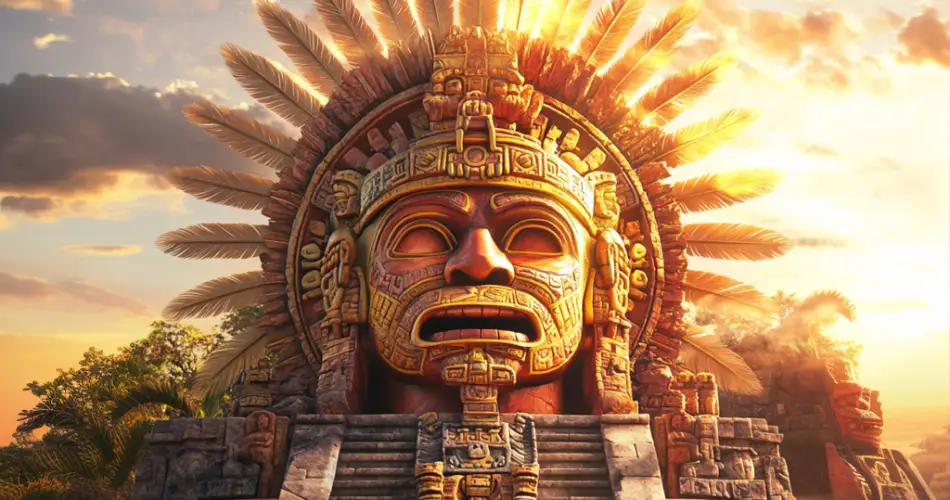The Aztecs were originally a nomadic tribe that migrated from northern Mexico around the 13th century to the Anahuac Valley in central Mexico.
According to legend, Huitzilopochtli, their patron god, guided them to a prophesied land, marked by an eagle perched on a cactus, devouring a snake—a symbol that is still an important part of Mexican Identity today.
Aztec mythology combines the culture and tradition of earlier Mesoamerican civilizations such as the Toltecs and Maya. They also added their own traditions to form a fascinating collection of myths unique to their civilization.
The Aztec Creation Myths
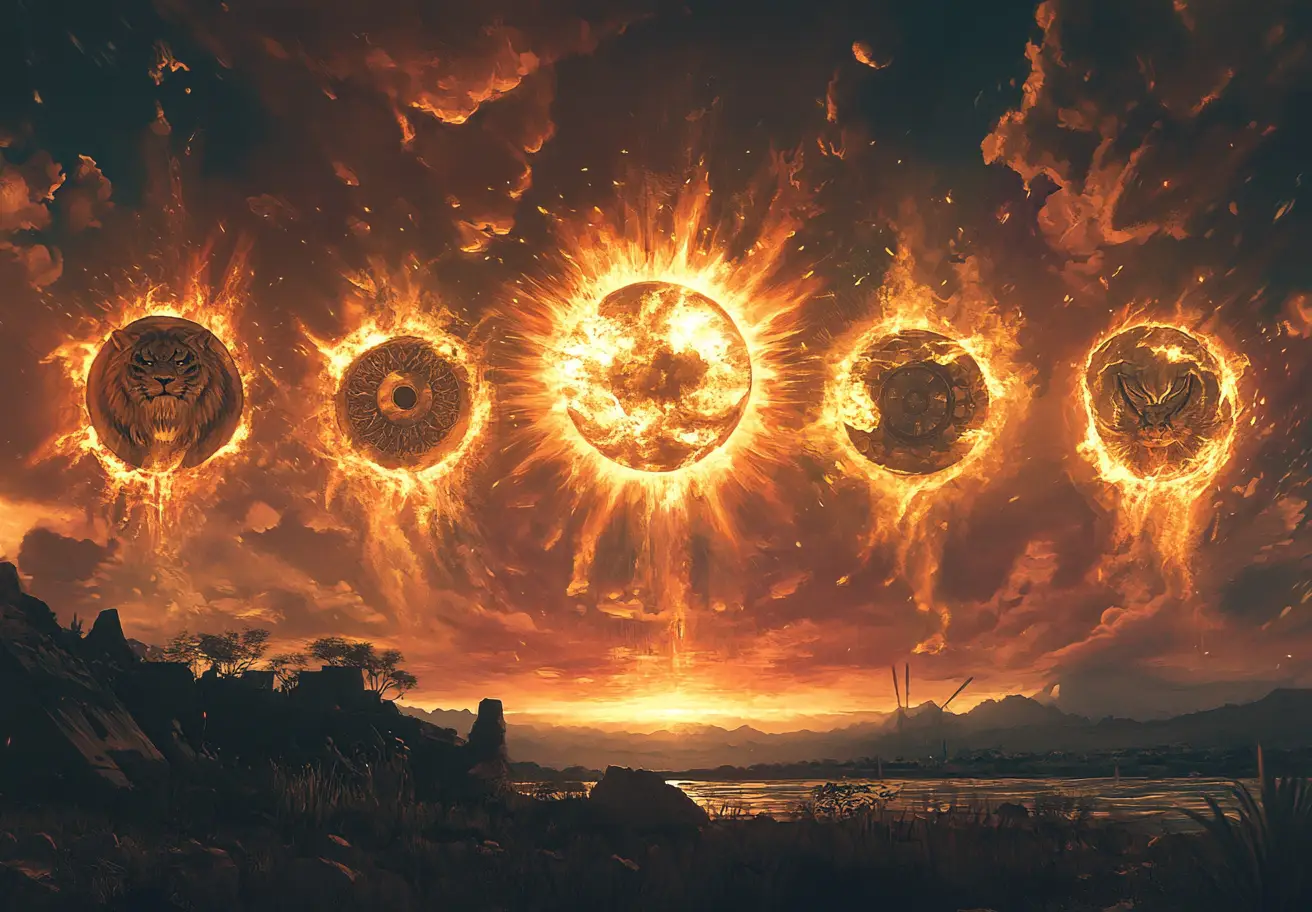
The Aztecs had different myths and legends surrounding the creation of the world. The most popular of these myths is the Legend of the Five Suns.
According to this story, the world has gone through a series of creation and destruction epochs. Each epoch is characterized by a “Sun” created through the sacrifice of the gods.
In the beginning, there was only darkness and chaos, and the gods decided to create the world. They started by forming the first Sun, ruled by the god Tezcatlipoca, who transformed into a sun to bring light to the world. The inhabitants of this first era were giants.
This first world was eventually destroyed by Jaguars.
The second Sun was created and ruled by Quetzalcoatl, but this era also ended in destruction when a fierce wind swept away everything. The survivors of this period climbed into the trees and became monkeys.
In the third era, Tlaloc, the god of rain, became the Sun. However, this period ended in a fiery rain that destroyed everything. The fourth Sun was ruled by Chalchiuhtlicue, the goddess of water, but it, too, ended in catastrophe when a great flood submerged the world, transforming its people into fish.
Finally, the fifth and current Sun was created. In this era, the gods realized that they needed to sacrifice themselves to keep the world stable. The god Nanahuatzin, humble and sickly, threw himself into a fire, becoming the Sun. He was later joined by the proud god Tecciztecatl, who became the moon.
Human Sacrifice and Rituals in Aztec Mythology
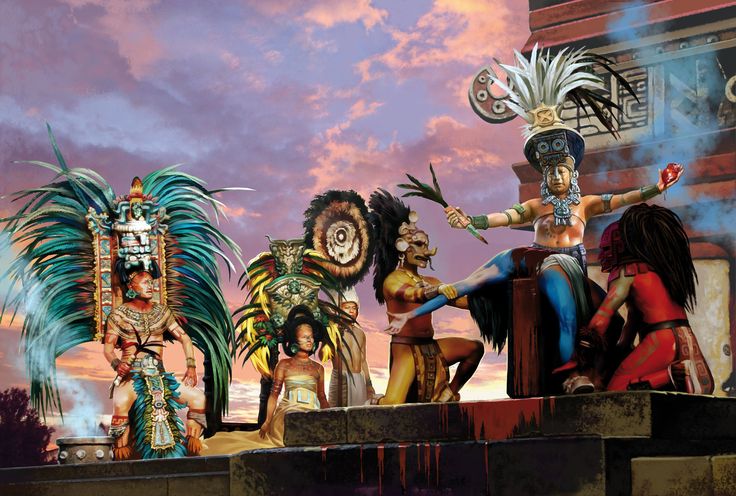
Of all the civilizations that have ever existed, the Aztec civilization is probably the one that is most associated with human sacrifices and rituals.
As mentioned earlier, the Aztecs believed that the current Sun was created by the sacrifice of Nanahuatzin. However, this sacrifice was only enough to create the Sun in the sky. The other gods had to sacrifice some of their blood to get the Sun moving across the sky.
The Aztecs believed that it was their responsibility to continue the initial sacrifice of the gods and keep the Sun moving through the sacrifice of human blood. They also saw it as a way of repaying the sacrifice of the five gods who gave themselves up in the creation of the five Suns. If these sacrifices were not done regularly, the Aztecs believed that the Sun would stop moving and the Earth would go dark forever.
The Aztecs also offered human sacrifices to appease the gods in times of famine, disease, and war. These human sacrifices were done in large numbers. According to Spanish records, the Aztecs sacrificed 20,000 to 250,000 people yearly.
The Afterlife in Aztec Mythology
Unlike other civilizations, the Aztecs believed that the soul’s destination in the afterlife was determined by how the person died. The way a person lived on Earth did not matter.
There are four possible destinations for the dead in Aztec Mythology
Chichihuacuauhco
This is a heavenly or sacred place where children’s souls go after death. In the Chichihuacuauhco, a mythical “Milk Tree” sustains these infant spirits by providing them with milk and nourishment.
The Aztecs believed that when the current Earth is eventually destroyed, these children will be reborn and sent back to the Earth to repopulate.
The Heavenly Realm
The Heavenly realm is the second and the most desired destination for the dead in Aztec mythology. This realm was reserved for warriors who died in battle or were captured and killed in ritual sacrifice.
The souls of these people are believed to help carry the Sun from the eastern horizon across the sky every day. The Sun is a crucial part of Aztec culture, so this task is seen as a great honor.
Souls sent to heaven are allowed to spend four years there, after which they will be reincarnated as beautiful butterflies or exotic birds on Earth.
Women who die during childbirth or pregnancy are also rewarded with a place in the heavenly realm.
The Tialocan
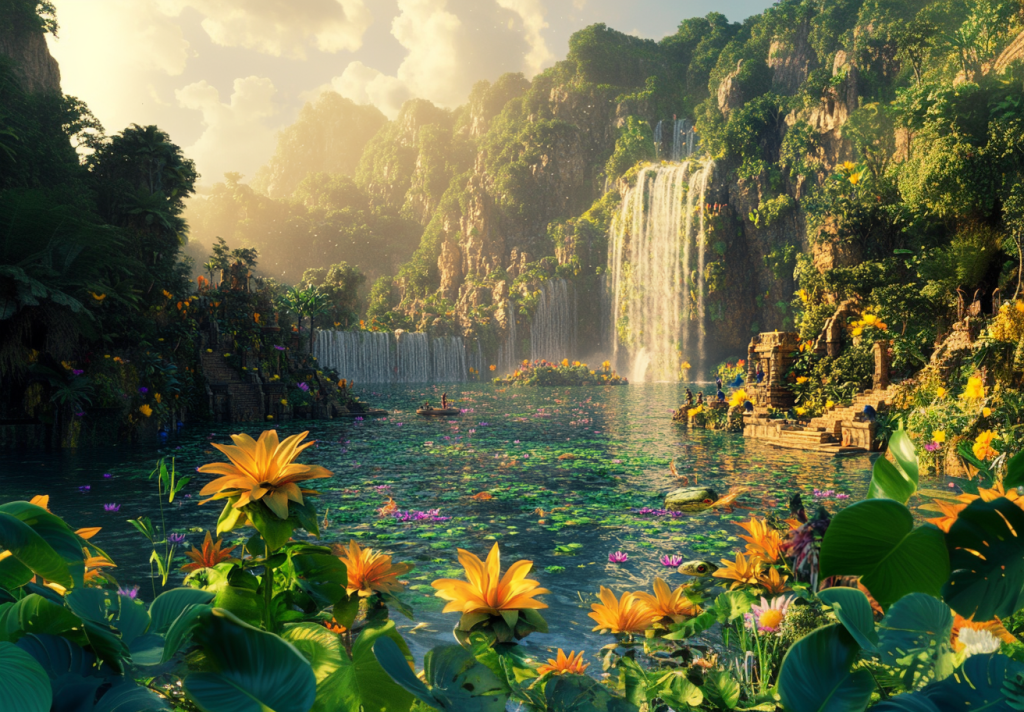
The Aztecs also believed that people struck by lightning or drowned had been chosen to serve Tialoc, the god of rain and storms. The souls of these people are sent to Tialocan, a paradise-like realm filled with beautiful flowers, fruits, and abundance.
Tialocan is a paradise of eternal spring, where the souls of the dead are nourished and live in comfort, free from suffering.
The Mictlan
This is where the souls of everyone else who died of natural cause are sent. These souls were condemned to serve Mictlantecutli and Mictlanciuatl, the lord and lady of the underworld.
Unlike other destinations in the afterlife, souls sent to the Mictlan must spend four years journeying through nine trials before finally finding rest.
The reason for this is unclear; however, each trial is designed to torture the travelling soul.
The Nine Trials of the Aztec Underworld
| Level | Description |
|---|---|
| Apanohuacalhuia River | The souls were required to cross this river. People were often buried with a small dog called Xoloitzcuintle to help with this crossing. |
| Tepeme Monamictlán | This is the second level. It is filled with mountains that were constantly clashing together. |
| Itztépetl | The Mountain of Obsidian. As the name implies, the ground here was made of obsidian, which would tear the flesh of those that walked through it. |
| Cehuelóyan | This level is filled with thick snow that is constantly falling. The snow is whipped up by wind so strong that it cuts the flesh like knives. |
| Pancuetlacalóyan | Here, the winds were so strong that standing and walking were basically impossible. One would have to pray that the winds would carry them to the exit, which could take years. |
| Temiminalóyan | A path in between the dark that the dead had to cross with care. Hidden in the darkness, there were invisible hands shooting arrows. |
| Teyollocualóyan | This level is a straightforward one. As the dead no longer need a heart, here wild beasts would tear open their chest and rip the heart out. |
| Apanohualóyan | A black river that the now heartless dead would have to cross, avoiding sinking to the bottom. |
| Chiconahualóyan | The last level presented a dense fog that made it impossible to see around. Here, the dead had to reflect on the acts that they did when alive. |
After these nine trials, the souls of the dead will finally be allowed to enter Mictlan, where they will be granted eternal rest.
Gods and Goddesses in Aztec Mythology
The Aztecs had an extensive pantheon of gods controlling everything in the universe. The supreme primordial twin gods are Tonacatecutli and Tonacaciuat. These two gods are believed to be the universe’s source of life and everything else. In some versions, Tonacatecutli and Tonacaciuat represent the male and female nature of a single god called Ometeotl.
The gods were not only of the ruling Mexica people; they also incorporated deities from conquered tribes, as the Aztecs honoured the gods of their vanquished enemies to prevent vengeance from these gods. For instance, Tlaloc, the rain god, and Quetzalcoatl, the feathered serpent, were inherited from earlier Mesoamerican cultures like the Toltecs and were integrated into the Aztec religious framework.
Role of Deities in Aztec Society
The functions and relationships of the Aztec gods were very complex and complicated. Some gods were linked to specific professions or industries, such as Tacatecutli, the god of merchants, whose worship reflected the importance of trade and economic expansion in the empire. Others governed agriculture, medicine, or even vices like drunkenness and carnal pleasures
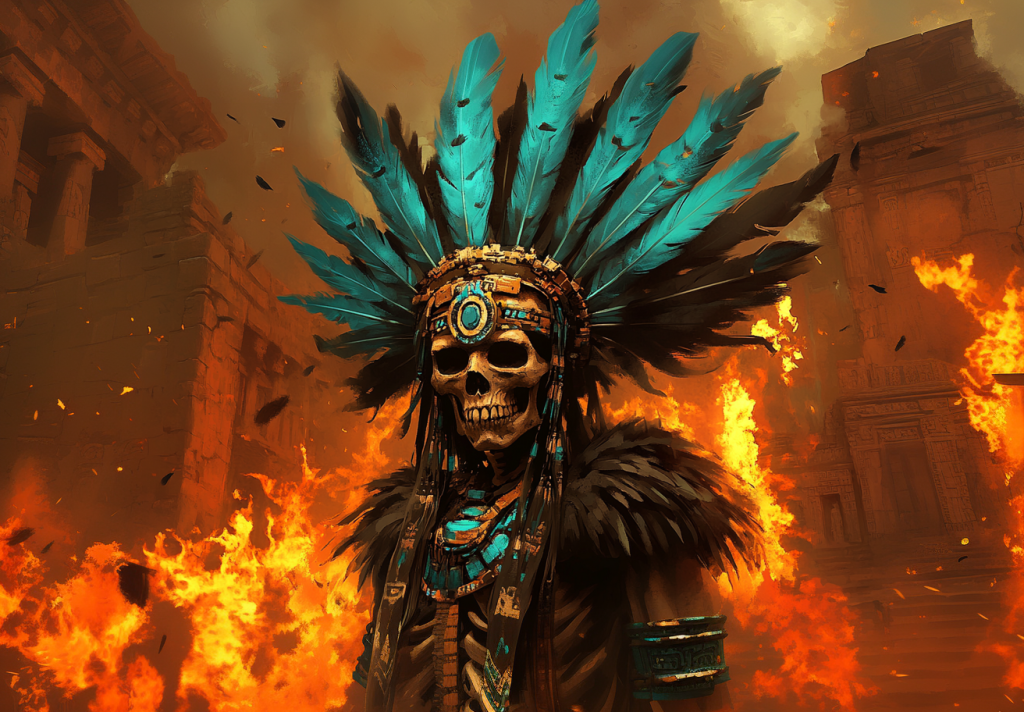
Despite the chaotic nature of this pantheon, certain principles of order emerged, particularly related to space and time. The Aztecs divided their world into four cardinal directions, each associated with different deities, animals, colours, and elements.
The gods who presided over these directions were the four elder gods, which include – Camaxtli, Tezcatlipoca, the black wizard of the night, Quetzalcoatl the wind god, and the Huitzilopochtli, who was said to be born without flesh. These gods were considered to be the guardians of the cosmos.
The Aztecs also associated gods with time, with different deities ruling over specific hours, days, and seasons.
Monsters and Creatures in Aztec Mythology
Aztec mythology is filled with hundreds of fascinating mythical creatures associated with different parts of life in the Aztec civilization.
Some of these creatures include;
The Ahuizotl
A dog-like creature that is believed to prowl the waters looking for souls to snatch for Tialoc. It is thought that this mythical creature had humanoid hands and another hand attached to its tail. This additional hand is used to snatch its prey.
Chaneque
This is a mischievous creature that is believed to be the guardian of the forest. It attacks and captures the soul of anyone who wanders too far into the forest. The Chaneque is also blamed for the disappearance of children who got lost in the forest.
Cipactli
A monstrous, crocodile-like creature with a gaping maw full of teeth. According to some over versions of the Aztec creation myths, the gods used Cipactli’s body to create the universe.
Quinametzin
These were giants that populated the world before the creation of humans. They are credited with the construction of the massive pyramids in the Aztec city of Teotihuacan.
